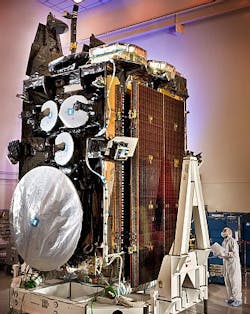Aerospace firms can do more with less with digital design tools
LONG BEACH, Calif., 2 April 2014. “The pressures are going to continue and we need to change the way we do business and how we manufacture,” stresses Tim Cahill, vice president, engineering, Lockheed Martin Space Systems at the Space Tech Conference in Long Beach, Calif.
“There is an emerging trend in advanced manufacturing, it is 3D printing and additive manufacturing, that promises to change the way we build things. To take advantage of that 3D printing and additive manufacturing future, we need to re-architect the way we do business, and it begins with our design concepts.
Labor is the biggest cost of designing, developing, manufacturing, and assembling systems, not materials. We need to do more with a smaller workforce, and digital systems enable this change and cost savings, Cahill says.
Experienced engineers work with pen and paper, sketching a solution on the back of an envelope, for example. Yet, “the workforce coming in today looks at a two-dimensional (2D) drawing and asks, ‘What is this thing you’re trying to get me to visualize?’ That’s now how the current workforce is headed, starting a design in 3D digital space rather than on paper, Cahill says. “How do we move genuinely into a digital tapestry? How do we tie all that together so data passes from generation to generation and nothing is lost. So that we can rapidly project and simulate how that system might operate at the end of its life by tying all the disparate systems together. There’s no paper – it’s a digital model and digital bill of materials (BOM).”
Cahill recommends: “coming up with clever, new techniques – to design common systems, to involve hardware and software, to be able to develop those systems rapidly, and to be able to auto-code. You ought to be able to get away from an environment where you’re hand-coding everything, weaving through thousands of lines of codes that threw your FPGA into an infinite loop,” he says.
“Look for opportunities. It is imperative we reduce the cost of systems if we don’t find a way, it will be a different world for us in 10 or 15 years,” Cahill concludes.
